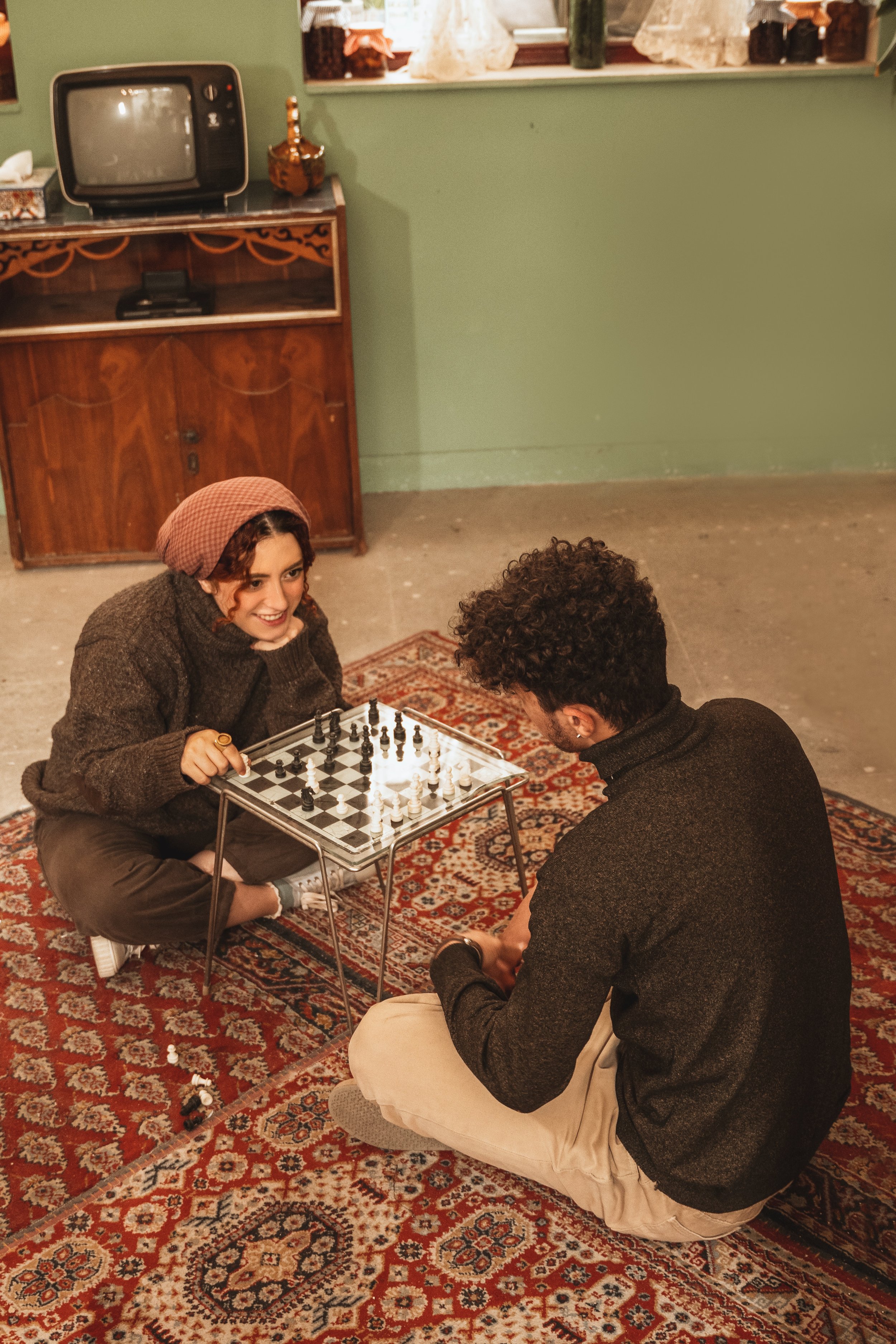Chess as it is known today can trace its roots back to India, over 1500 years ago. The game that would develop into chess was called Chaturanga. Chaturanga is a similar game to Chess, being played on a grid. The board was 8 x 8, and uncheckered, unlike Chess. Not everything is known about the game, some boards appear with markings, the purpose of which is unknown. The exact abilities of the pieces is also unclear, with lots of uncertainty surrounding the moves of the elephant. Many of the Chaturanga pieces have been later translated into the Chess pieces known today. The objective is also the same as in Chess, to checkmate the opponent’s King. The game is thought to have inspired many other games, such as Shogi.
This game spread to the Muslim world by means of invasion. Chess would become known to Europe though Muslim Spain, continuing to evolve throughout the Medieval years. By 1500 CE, Chess is thought to have settled into the game that is known today.
Photo by Joel Heard on Unsplash
Although the rules have stayed mostly the same for hundreds of years, many schools of thought have originated on the best way to play Chess. One notable example is that of Romantic Chess, popular from about 1800 to 1880. This type of Chess play was known for quick maneuvers, as opposed to long term planning. It is notable for the fact that winning was often considered secondary to style. Dramatic sacrifices are considered essential to Romantic Chess, where giving up essential pieces like the Queen and Knight in order to secure a shocking victory are the pinnacle of performance. These ideals were partially based on the idea that attack and offense was more honourable than defense.
This was rejected by thinkers Louis Paulsen, Wilhelm Steinitz, and Paul Lasker. These two changed the way the game was played, focusing instead on a slow buildup and strong defence in order to win a long term victory. Steinitz is perhaps most well known for pioneering Positional Chess, sometimes called the Classical School. The School focused on occupying the board with one’s pawns, taking advantage of small advantages over the long term as opposed to the quick and decisive attacks of Romantic Chess.
Positional Chess evolved into Hypermodernism Chess. The main difference is the control of the center of the board with one’s pieces, as opposed to an occupation with pawns alone. Hypermodernism brought about the most well known group of Chess players being that of the Soviet Union. Beginning in the late 1920s, Soviet players dominated the game. They held records from 1927 to 2006, with only a few notable exceptions.

Soviet Chess players traded the title of world champion back and forth until in the early 70s, Robert James Fischer, better known as Bobby Fischer appeared on the sense. Fischer was able to defeat Boris Spassky in a remarkable comeback. Fischer was a character, refusing to play at certain venues or events. He also refused to defend his title won from Spassky three years later aft er the FIDE, the body governing competitive Chess refused to agree to his rules for how the match should be played. Much discussion was held around the so-called “9-9 clause,” that would require the challenger to Fischer to win with a two round lead. He only re-emerged in 1992 to play a match against Spassky in Yugoslavia, despite an ongoing embargo, winning again, he disappeared once more.
Photo by Ali Karimiboroujeni on Unsplash
With the world champion title back in Soviet hands in the late 70s, attention slowly turned to Chess algorithms and computers. In the 1980s. Garry Kasparov began to make use of computers in order to practice and hone his own game. He was able to beat a number of computers at the game, however, this changed with his match against Deep Blue in 1997. This was actually a rematch between man and machine, their first match having taken place a year prior in 1996. This match held far more significance than the Fischer-Spassky games, pitting East and West against each other at the height of the Cold War. Kasparov vs. Deep Blue was a battle between humankind and a machine, a battle which Kasparov ultimately lost, marking the first time a computer was able to beat a Chess master.

